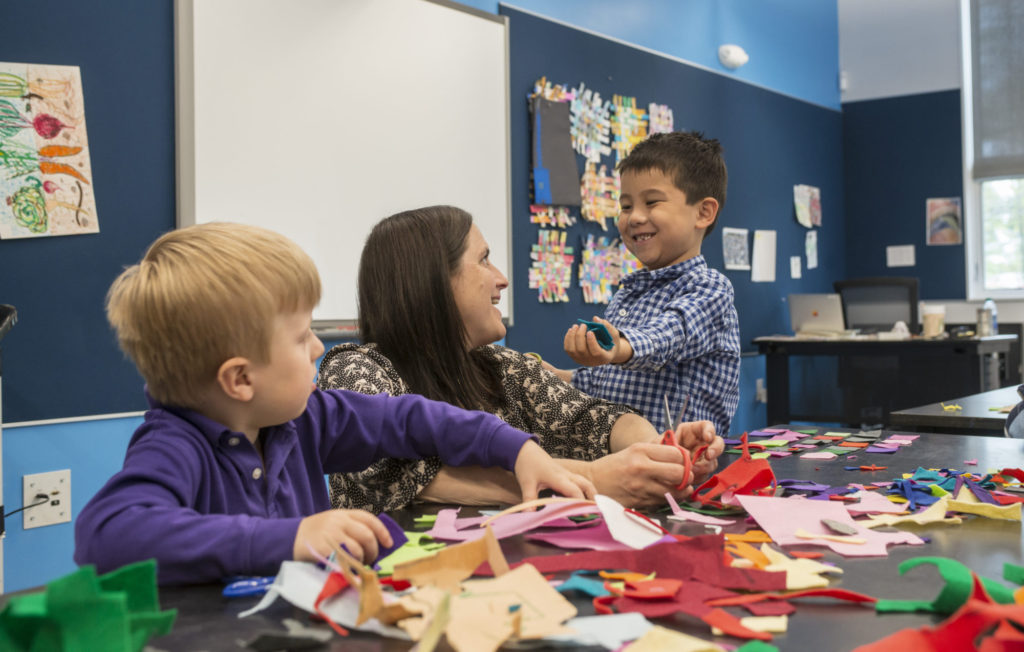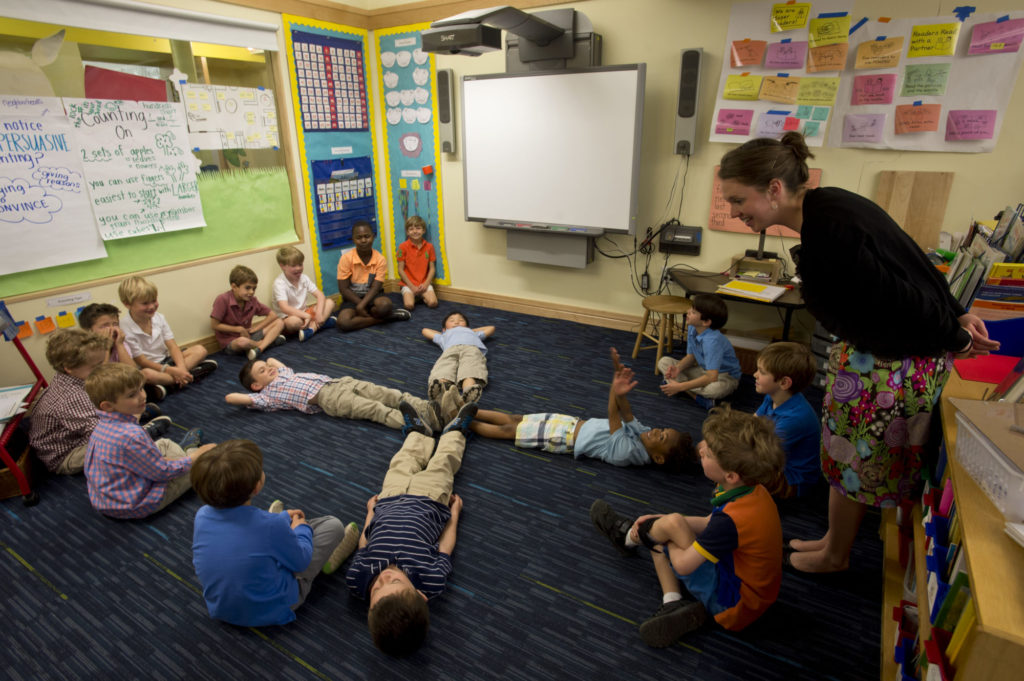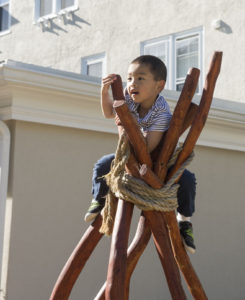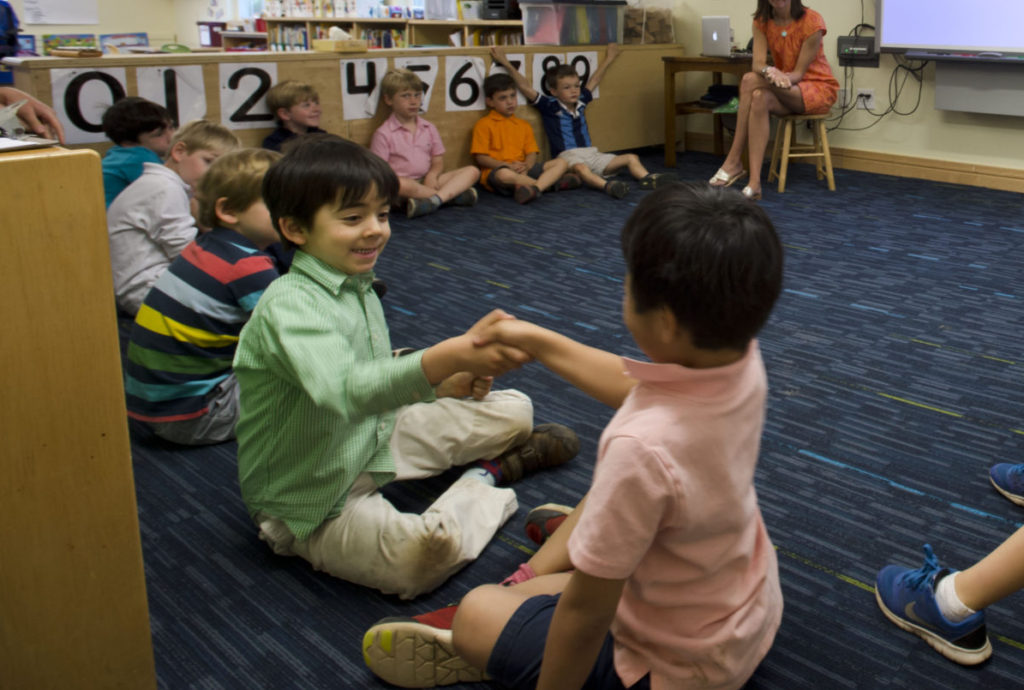High-quality Pre-K programs understand that your child’s physical, cognitive, and social and emotional development is critical to building a foundation for learning.
The developmental changes that young children experience in Pre-K are critical to their long-term success. It is important to nurture your son’s physical, cognitive, and social and emotional development. To help him thrive, you want to find a school that not only supports your son’s healthy development but understands the relationship between childhood development and learning.

Early childhood development has profound and lasting consequences for your child’s future.
In 2015, the Institute of Medicine and the National Research Council published a report for educational professionals that found that childhood development is a critical foundation for lifelong progress. It noted that the brain develops rapidly during a child’s early years. “Because of this, early childhood is a window of both great risk of vulnerability to disruption and great potential for the impact of positive developmental influences.”
 Emotional and instructional support from teachers is especially important because it helps young children approach learning opportunities more positively and confidently. According to the report, the quality of the relationship between teachers and young students has “a significant and potentially enduring influence” on a child’s classroom success.
Emotional and instructional support from teachers is especially important because it helps young children approach learning opportunities more positively and confidently. According to the report, the quality of the relationship between teachers and young students has “a significant and potentially enduring influence” on a child’s classroom success.
Fessenden’s Director of Teaching and Learning, Shalini Rao, leads faculty and staff through conversations about childhood development, learning, and differentiated instruction. Much of her focus is on ways faculty and staff can nurture positive relationships with each student so they can support student’s individual growth.
 Children learn and retain information better when the learning is experiential. “One of the many benefits of project-based learning models is that students often work in small groups,” explains Shalini. “These shared activities deepen a child’s relationship with his teachers and peers while offering potent opportunities for further growth and development.”
Children learn and retain information better when the learning is experiential. “One of the many benefits of project-based learning models is that students often work in small groups,” explains Shalini. “These shared activities deepen a child’s relationship with his teachers and peers while offering potent opportunities for further growth and development.”
Three key areas of childhood development support early learning in Pre-K programs.
 The optimal learning environment for Pre-K students requires a balance between comfort, which provides a sense of security, and challenge, which offers the opportunity for growth. To strike this balance, educators must understand how three critical areas of childhood development present themselves in a classroom environment:
The optimal learning environment for Pre-K students requires a balance between comfort, which provides a sense of security, and challenge, which offers the opportunity for growth. To strike this balance, educators must understand how three critical areas of childhood development present themselves in a classroom environment:
Improvement in gross and fine motor skills are evidence of physical development.
Four-year-olds grow an average of four or five inches over the course of just one year. They gain better control and exhibit more coordination when they are running and jumping. They also get better at drawing basic shapes, putting together puzzles, and writing letters.
“We know how important movement is to gross motor skill development,” says Shalini. “But it also helps students focus when they are in the classroom. It’s a big part of keeping young students engaged.”
 That engagement allows Pre-K students to focus on writing and drawing, both of which improve fine motor skills. “At this age, the boys are emergent writers,” explains Shalini. “So, we might give a student a sheet of unlined paper, talk about letter recognition, and give simple directions for writing that letter.
That engagement allows Pre-K students to focus on writing and drawing, both of which improve fine motor skills. “At this age, the boys are emergent writers,” explains Shalini. “So, we might give a student a sheet of unlined paper, talk about letter recognition, and give simple directions for writing that letter.
Cognitive development often presents as improvements in language, math, and abstract thinking.
In Pre-K, children can sort objects by size, shape, and color, and can count items in a group. They make up silly songs, stories, words, and rhymes. They start to experiment with language and play with abstract ideas.
Learning and play often go hand-in-hand. “If you watch the students on the playground, you’ll see many of them engaged in pre-mathematical activity,” notes Shalini. “They count and sort materials into groups with similar characteristics and explore patterns, shapes, and spatial relations.”

Play is also an excellent opportunity for language development since children learn a significant amount of their vocabulary through social interactions. Language development is enhanced when children participate in teacher-facilitated conversations. “Every morning starts with circle time,” explains Shalini. “In addition to setting the tone for the day, it gives the students regular opportunities to participate in small-group discussions. The combination of listening and speaking helps our youngest learners develop more robust language skills.”
Social and emotional development is present in student interactions with their teachers and peers.
Pre-K is the perfect opportunity for children to learn how to share, work together, and take turns. It is also a time when young children start playing with their peers and separating from their parents more easily. In so doing, they learn how to identify and manage their emotions.
Students at Fessenden start their day in Morning Meeting. It’s part of a predictable routine that helps young children feel safe and secure so that they can take more risks. “Pre-K students want to be helpful,” says Shalini. “They want to follow the rules and please their teachers. But they need routines, follow-up, and clear and simple expectations.”

Morning meeting is also a critical part of Fessenden’s character education curriculum. “In our Lower School, we often focus these conversations around empathy and what it means to be a good friend,” adds Shalini. “We talk about strategies and how to navigate difficult situations. We also talk about our feelings and how we think others feel when we aren’t a very good friend.”
Young children thrive when they have secure, positive relationships with their teachers, especially when those teachers understand the relationship between childhood development and learning. If you’re looking for a Pre-K program for your son, we encourage you to visit us to see these positive relationships in action.
To help you prepare for your visit, we created The Pre-K & Kindergarten Private School Visit Checklist. Download it today and use it to help you gather the information you need to identify the best Pre-K program for your child.





I want to make sure that my son gets educated effectively. It makes sense that preschool would be beneficial for him! I can see how that could prepare him for when he goes to school. It would be smart to find a preschool that has good reviews.
My favorite part of this article is the importance of giving emotional support to your child for them to be comfortable. My cousin said to me last night that she is considering enrolling my nephew in pre-kindergarten and asked if I had any recommendations. Thanks to this helpful article, I’ll be sure to tell her that it’s much better if she contacts a reputable early education center, as they can answer all of her questions and offer my nephew a high-quality education and memories.